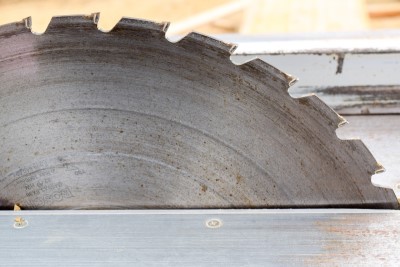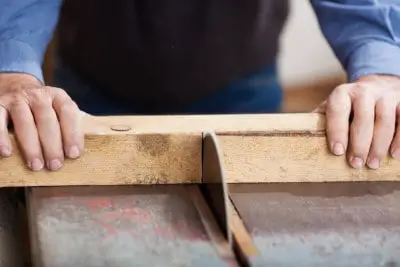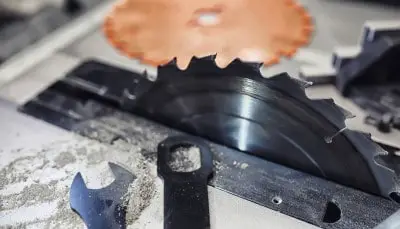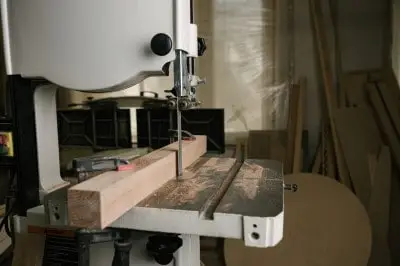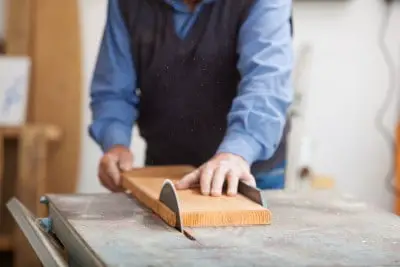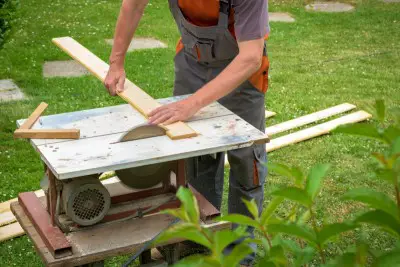Acrylic (also known as plexiglass) is a material that is widely used for many different reasons, including windows, signs, screens, and lenses; it is a robust material and certainly much more difficult to work with compared to a simple piece of plywood. Despite the trouble that people have with cutting acrylic, there are certain circumstances where no other material will work as well.
If you’ve ever been to an aquarium, then you’ve likely seen acrylic in action… yes, the massive panoramic windows that allow us to look into water and watch the fish is all thanks to acrylic blocks glued together. No matter what you are using acrylic for, you are probably doing so because there is no substitute for the material – if you only have a table saw to work with, you might be wondering if that’s capable of cutting acrylic.
Yes, you can cut acrylic with a table saw; that said, how easy it is to cut depends entirely on the quality of your table saw, the thickness of the acrylic, and the type of blade you are using. If you are using the wrong blade, your table saw is of poor quality, or the acrylic material is unusually thick, then you may have trouble doing so.
Table saws will usually work just fine for cutting acrylic but there are other ways to do this as well; in this article, we will go over how to cut acrylic material using a table saw and also go over these other methods that work just as well, if not better.
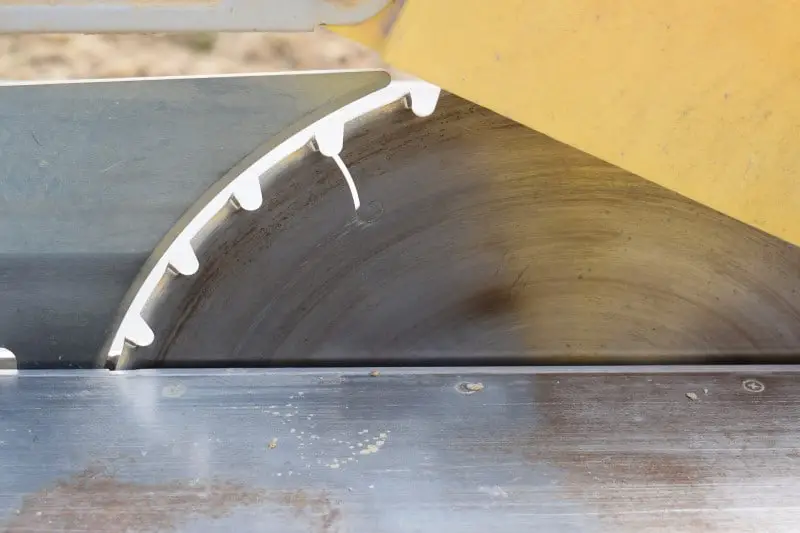
How To Cut Acrylic With A Table Saw
If you already own a table saw and you need to cut acrylic material, you should be fine doing so as long as your saw is of good enough quality to handle more than just wood (which most table saws are perfectly capable of).
It is important, however, that you have the right blade on your table saw before trying to cut acrylic.
Best Blades To Use
Acrylic is a tricky material – the wrong blade can make this cutting process a whole lot harder and may even prevent you from being able to cut all the way through successfully.
Obviously, the less labor involved in any cutting job typically results in a better finished product (not to mention a less stressful experience).
So, this is why choosing the right blade is very crucial.
The best blades to use on your table saw for cutting acrylic material are:
Fine-Toothed Carbide Tipped Blade
This blade is perfect for cutting acrylic with your table saw.
The fine-toothed carbide tipped blade will be able to combat any acrylic material you throw at it, even if its on the thicker side; although carbide tips generally stay sharper than other blade types, it is worth giving it a clean and sharpen if needed (this will make the cutting process that much easier).
This blade will cost you anywhere from $20 to $50 (prices will vary).
High-Speed Steel Blade
If you don’t already own a fine-toothed carbide-tipped blade, then a high-speed steel blade will work just as well; if you don’t own either and need to cut acrylic, then it might be worth it to go buy one of the two.
A steel blade will cost you up to $100, although it will probably be much less.
Sharp Fine-Toothed Plywood Blade
This type of blade is not as good as using high-speed steel or a fine-toothed carbide-tipped blade, but will do just fine.
You should only attempt to cut acrylic with a fine-toothed plywood blade if already own one and don’t want to purchase either of the first two blades mentioned; if you have to go to the hardware store anyways, you might as well buy a steel or carbide-tipped blade.
If you are using a fine-toothed plywood blade on your table saw to cut acrylic material, make sure the blade is sharp and free of any warping.
Laminate Cutting Blade
Similar to using a sharp fine-toothed blade, the laminate cutting blade is not as ideal for cutting acrylic as the first two type of blades mentioned.
If you are cutting a thin piece of acrylic and already own this blade, then this should work just fine. That said, if your cutting job is ‘serious’ and the final result matters to you, you may want to make the trip to your local hardware store and purchase either a high-speed steel or carbide tipped blade.
Whatever blade you have, as long as it is one these four then you should be just fine.
Once you have the right blade attached to your table saw, here’s how to actually cut the acrylic.
How to Cut Acrylic (Step-by-Step)
Here’s a basic overview of how to cut acrylic material with your table saw:
- Make sure your table saw blade is clean, sharp, and is not warped or bent.
- Your saw and table should be dust- and debris-free.
- Set the height of your table saw blade to about a half-inch higher than the thickness of your acrylic material.
- Set your table saws fence to the sheet width you are cutting.
- Lay down the acrylic material on the table. (When laying your acrylic material down, do it so that the side with masking-film is on the bottom).
- Plugin and start your table saw.
- Feed the acrylic material into the blade, at a rate of about 3-4 inches per second.
- If the acrylic material starts melting (this can happen) then slow down your feed rate.
- After your finished, simply clean the dust and debris and repeat the steps if necessary.
Although cutting acrylic material is possible using a table saw, there are other ways to do so as well.
Five Other Ways To Cut Acrylic Material
Besides using a table saw, here are five more ways that you can try to cut your acrylic material.
Jigsaw
A jigsaw is arguably better for cutting acrylic material than a table saw is.
This tool works by cutting the acrylic sheet in a simple up/down motion; if you are cutting the material nonlinearly, then this tool is your best bet.
The accuracy for cutting acrylic with a jigsaw is easier than with a table saw due to how these different power tools work.
Bandsaw
A bandsaw is often known for its ability to cut curves and shapes.
Using a bandsaw to cut acrylic is probably not as good as using a jigsaw, but it is still a great option; use a good blade and figure out the optimal feed rate so you don’t melt or chop the sheet.
Any of the three electric saws discussed in this article (band, jig, and table saw) will work well for acrylic, but you don’t actually need an electric saw necessarily.
Scoring Knife
A scoring knife is a great tool to cut acrylic materials, assuming the sheet isn’t too thick… obviously, electric saws have much more power so you need them if you are cutting very dense materials but, if not, this tool works just fine.
To use a scoring knife to cut acrylic material, all you need to do is cut a groove in the sheeting; then, bend the sheet (in the right direction) and the groove will allow the sheet to snap in a way so that the edges are nice and clean.
Hand Saw
Some people actually prefer using a hand saw for cutting acrylic materials over using an electric saw since it allows for more control.
That said, using a hand saw requires labor and concentration – make sure the saw is sharp and has uniform teeth for best results.
Laser
Obviously, not many people (certainly not your average woodworker) have access to a laser hooked up to a computer, but if you do, it will work wonders on cutting acrylic sheets.
Whatever tool you end up using, as long as it is in good shape then it should have no problem taking on any acrylic material you need to cut.
Read more:


